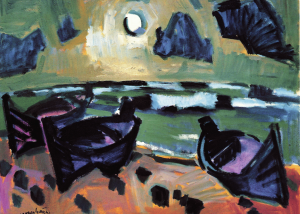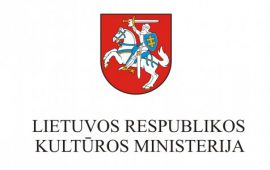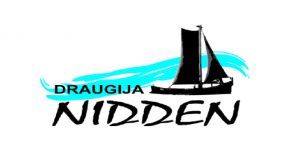Exhibition “Light and Space, Water and Sun. Sight to the Nida Artists' Colony". Late 19th-first half of the 20th century painting and graphic art from the collection of Aleksandr Popov (Klaipėda)”
15 March - 2 June, 2018

This exhibition displays paintings and graphic art works from the collection of the Klaipėda resident, Aleksandr Popov. Formerly a long-distance ship’s captain, today the entrepreneur, who sees himself as willing to take risks and curious, has amassed a collection of around 1,500 paintings and graphic art works over the course of a decade that represent the art of East Prussia from the 19th–first half of the 20th centuries. Together with other like-minded afficianados who in 2009 founded the Nidden Society of East Prussian Art Lovers ( the society administers the collection), he organises both major and smaller exhibitions of the works in various cities and towns across Lithuania, and has compiled a publication about East Prussian art.
All the new stylistic streams and trends that were flourishing in European art at the time were also demonstrated in the art of East Prussia, albeit somewhat later. The turning-points in history of the 20th century cast many of the artists who created works here into oblivion, much of their production was destroyed, only single pieces survived in museums or with private individuals. Popov’s specifically amassed collection is valuable in both an aesthetic sense, and a historical sense: the paintings and graphic art prints eloquently tell of the land and its natural surroundings, encouraging viewers to learn about the history of two of the region’s important art phenomena – the Art Academy of Königsberg (open from 1845 to 1945) and the Nida Artists’ Colony.
In 1830 in the village of Barbizon, on the outskirts of the Fontainbleu forest not far from Paris, several painters, fans of simple and natural nature studies, gathered. Barbizon became the first artists’ colony in Europe. Surrounded by nature, untouched by civilisation, a calm and secluded place for creating art – it was a godsend for many artists of the 19th century unable to contend with the turmoil and noise of the rapidly growing cities. Both large and small temporary artists’ collectives, mostly in rural areas, started sprouting up like mushrooms after the rain. According to data from the euroArt European Federation of Artists’ Colonies, over 130 artists’ creative centres have been established in various European countries since Barbizon.
An artists’ colony started to form in Nida at the end of the 19th century. The nature of the Curonian Spit and the remote, poor fishing village of Nida was first discovered by travellers and writers, later on, by the professors and students of the Art Academy of Königsberg.
The aim of this exhibition at the Vytautas Kasiulis Art Museum is to give an overview of several aspects of the historic artists’ colony in Nida. Works from the collection associated with the Nida colony prompted three themes for the exhibition: “The beginning and the initiators” – the discovery of the Curonian Spit landscape in the 19th century, the formation of the artists’ colony in Nida and its first members; “New winds of change” – the arguments between the colony’s modernists and traditionalists over style before and after the First World War; “Boats, sand, pines” – the colony’s further development until 1945. The main themes are supplemented by three sub-themes: “An exhibition of images of Nerija” – about the less well-known exhibition held in Königsberg in 1914 that was dedicated to the Curonian Spit; “An Italian approach and the view from the dune” – the exclusive motif and its interpretations in works by the Nida artists; “The extra-ordinary ordinary” – about the unusual features of life on the narrow strip of sand between the lagoon and the sea as seen through the eyes of metropolitan artists.
The oft-repeated beginning of the colony’s history has become legendary: in around 1888 Heinrich Krüger, a graduate from the Art Academy of Königsberg, invited Ernst Bischoff-Culm, still a student at the academy, to the Curonian Spit – he was later joined by Culm’s cousin, Eduard Anderson, who had just begun painting studies in Königsberg. The journeys on foot from Rasytė (Rossitten, presently Rybachy) to Nida left an indelible impression on the young artists. Bischoff-Culm, Krüger and Anderson, together with the painters Fritz Behrendt, Hans Beppo Borschke, Bertha Schütz and writer Walther Heymann formed the compact core of the early Nida Artists’ Colony, united in the spirit on late romanticism and plein air realism. Until 1900, almost all of the colony’s members were either born in East Prussia or studied there, some being teachers at the Art Academy of Königsberg.
Artists from the collective immediately took a liking to Hermann Blode’s hotel (established in 1867) situated at the eastern end of Nida, in Skruzdynė, lying on the shores of the lagoon. It was popular for its convenient location and the charismatic owner himself. Blode enjoyed the company of artists and understood them, accepting paintings from those who lacked funds for accommodation or meals. Often painters simply gave their dear “Papa Blode” works as gifts. Thus, a collection of paintings gradually started to grow at the hotel.
Life in the colony was especially intense until the First World War. In 1909 the expressionist Max Pechstein first came to Nida. His works created in Nida proposed a different look at the landscape, with bright colours and new motifs dominating, such as nudes in natural surroundings. This aroused heated discussions between supporters of late impressionism and expressionism, as yet uncommon in East Prussia.
The colony’s early core fell apart during the years of the First World War. But after the rarefaction the colony’s members experienced at the turn of the 1910s–1920s, the number of artists again started to grow. Representatives of other art streams besides expressionism appeared – new materialists and late expressionists. Often several stylistic trends were combined in the works of the same artists. Discussions about art lasting until midnight and the sounds of music and poetry could again be heard on the “artists’ verandah” of Blode’s hotel. Landscape remained the most important painting genre at the Nida colony, supplemented with the comparatively infrequent figural compositions and portraits. The lagoon and the sea, shorelines, ports and jetties, dunes, sand, pines, small fishermen’s cottages and boats, the elegantly weighty flat-bottomed kurėnas boats, vėtrungės [traditional mast decorations], moose, the varied birdlife, the everyday life and festivals of the fishermen, the work done by their women and the tense waiting for their men to return from the sea – these were the main motifs in paintings created at the Nida Artists’ Colony. It would be impossible to categorise the great number of artists from all corners of Germany flooding into Nida from the end of the 1920s until the beginning of the 1940s, neither by motifs, nor by the stylistics of their work – the goal of each creator to convey the impressions left on them by the uniqueness of the landscape and the everyday life of the fishermen in their works depended both on their means of expression and their skill.
The Second World War cut short the history of the Nida Artists’ Colony. The painting collection formed at Blode’s hotel for so many years was destroyed at the beginning of February, 1945 with the invasion of Red Army units into Nida. Many of the artists who remained loyal to the Curonian Spit, now cast far away from “the wonderful land” revived its memory in “remembrance paintings”. This was a unique page in the history of the artists’ colony.
The number of members of the Nida Artists’ Colony given in various sources varies from 200 to 400. At least half of them were originally from East Prussia, others had arrived from West Prussia and other regions in Germany. In the first half of the 20th century, Nida was a location for creation and rest favoured not only by German artists but also musicians, composers, actors, writers and photographers, termed the “Barbizon of the Curonian Spit” by writer Paul Fechter, rightfully stating that Nida’s significance in new art was not restricted to Germany’s eastern territory alone.
Curator Kristina Jokubavičienė
Exhibiton was partially funded by :
 |
 |
 |
1 Goštauto st, Vilnius, Lithuania
+370 5 261 6764.
kasiulio.muziejus@lndm.lt














